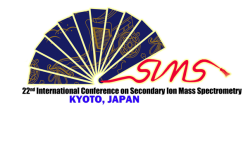Nominations for the International Scientific Committee (North America / Europe)
Download nominations for International Committee as pdf.
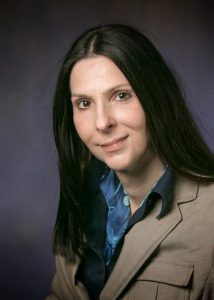
Mary L Kraft is an Associate Professor of Chemical & Biomolecular Engineering at the University of Illinois at Urbana-Champaign. She received her undergraduate degree in Biochemistry for the University of Illinois at Chicago in 1998, and her PhD in Chemistry from the University of Illinois at Urbana-Champaign in 2003. Her PhD research focused on the synthesis of surface-functionalized hydrogels within microfluidic devices and characterizing these soft organic materials. In 2003, Mary became a post-doctoral fellow in Steven G Boxer’s laboratory at Stanford University. There she pioneered the application of SIMS performed with a Cameca NanoSIMS 50 to quantitatively imaging the distributions of specific lipid species in phase-separated model membranes with 100-nm-lateral resolution. In 2006, Mary received a Career Award at the Scientific Interface from the Burroughs Wellcome Fund for her proposal to extend her application of NanoSIMS for imaging distinct lipid species to the plasma membranes of actual mammalian cells. She initiated this research when she began a faculty position in the Department of Chemical and Biomolecular Engineering at the University of Illinois at Urbana-Champaign in 2007. Since then, Mary and her team has developed methodologies that enable using a NanoSIMS instrument to simultaneously image cholesterol, lipid species of interest, and specific proteins within the plasma membranes of intact cells with ~ 100-nm-lateral resolution. Mary received the 2015 Award for Early-Career Research from the American Vacuum Society Prairie Chapter for this work. She has presented this research in numerous invited talks at universities, companies, and conferences, including 8 invited talks at the international SIMS conference and other workshops and conferences focusing on surface analysis or imaging mass spectrometry. Mary has also helped expand interest in SIMS beyond the traditional community by giving 20 invited seminars on her work at medical schools, biology departments at universities, conferences for biological societies, and workshops on cell membrane organization in North America, Europe, and Asia.
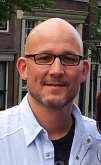
Gregory L. Fisher is the Principal Scientist at Physical Electronics specializing in mass spectrometry (MS) imaging applications and instrument development. Greg earned B.S. degrees in Chemistry and Physics at the University of Wisconsin, and a Ph.D. at the Pennsylvania State University. While at Penn State, Greg participated in the development of secondary ion mass spectrometry (SIMS) analytical instruments, investigated the fundamental physics of ion-solid interactions, and examined the bonding of metal atoms at functionalized organic surfaces. Greg was at Los Alamos National Laboratory for seven years engaged in the development of reactive targets for the high explosive reaction chemistry via ultrafast laser-excited spectroscopy (HERCULES) project. He was part of the nuclear materials science group where he participated in LANL’s science- based stewardship mission. While at LANL, Greg was at the forefront of cluster ion beam development as an analytical probe for time-of-flight SIMS (TOF-SIMS) analysis, and established the use of a C60 analytical ion beam for high sensitivity measurements to understand the effects of ionizing radiation on the properties of polymers. Since joining Physical Electronics in 2006, Greg’s activities have included the application and optimization of cluster ion beams in TOF-SIMS analysis for 2D and 3D characterization of organic and inorganic materials, and the development of 3D imaging by FIB-TOF tomography. An underlying theme of Greg’s work has been the development of TOF- SIMS as a practical tool for molecular identification in materials and biological analysis. A hallmark has been the development and introduction of a new mass spectrometer for Parallel Imaging MS/MS (TOF-SIMS tandem MS imaging) which enables the compositional and structural elucidation of molecules with visualization at high lateral resolving power by coupling tandem MS imaging with TOF-SIMS imaging. This revolutionary technology is now utilized around the globe for accurate identification of inorganic, mineral / geological, metal-organic and organic ions at high lateral resolving power, removing the guesswork and greatly improving the ease-of-use of TOF-SIMS imaging.
Greg is a member of the American Vacuum Society (AVS), the American Physical Society (APS), the American Chemical Society (ACS), the Microscopy Society of America (MSA), and the American Society for Mass Spectrometry (ASMS). Greg has been an Executive Committee member of the AVS Applied Surface Science Division (ASSD) wherein he was Chair of the Awards Committee and served on the ASSD Program Committee; he also served multiple years as Treasurer of the AVS Minnesota Chapter. He has served on local organizing committees, scientific committees and program committees of several regional and international conferences. Greg is also a Local Organizing Committee member for the SIMS XXIII International Conference to be held in Minneapolis.
Statement of Intent: I intend to support present efforts and to propose new ways to invigorate and grow the international SIMS community. Over the last two decades, participation in our community has continually shrunk which is linked to the retirement of many university professors whom used to teach the theory and practice of SIMS. To grow interest in our SIMS community, I have been involved with three activities: (a) I have worked via the AVS-ASSD to resurrect the USA SIMS Workshop, (b) as a co-chair, I have established a 2D/3D High Spatial Resolution MS Imaging interest group which meets during the annual ASMS conference, (c) as co-organizer, I have launched a High Resolving Power, Multi-Modal and Correlative SIMS Imaging symposium at the annual M&M conference. If elected to the International SIMS Society IC, I will work from within the SIMS community, building on the activities listed above, to grow our ranks by supporting academic programs, participating in educational projects, and promoting outreach efforts.

Laetitia Bernard was born in 1977 in Montreux (Switzerland). She graduated as physicist and engineer at Ecole Polytechnique Fédérale de Lausanne (EPFL) in 2001, after the completion of a Master project in organic spintronics at the University of Lincoln-NE, USA. She received her PhD in Physics in 2006 with Summa cum Laude distinction at the Universität Basel, for her experimental work in the field of molecular electronics. She pursued this work during her post-doctoral fellowship at Yale University, USA. During her stay at Yale, she was recruited by the Swiss Federal Laboratories for Materials Science and Technology (Empa) to lead the Swiss team on the 4-years European project 3D- NanoChemiscope. In close collaboration with the German company ION-TOF and six other European partners, she contributed to develop a state-of-the-art prototype ToF-SIMS/SFM combined instrument for the structural and chemical analysis of materials and devices. Today, ION-TOF sells this instrument worldwide. After the completion of this project, Laetitia was appointed as permanent scientist, to develop and take the lead of the ToF-SIMS research activity at Empa. With her small team (~4 researchers), she now focuses on the investigation of novel molecular- and functional polymer-based micro-structures and devices. This includes the development of methodologies and techniques dedicated to their chemical and/or structural characterization. One example is the development of a method to probe ionic motions within in- operando optoelectronic devices.
To cope with the high demand from Swiss academic and industrial research partners, she settled a competence centre and facility (~20 users) for the advanced chemical analytics in various application areas (Organic Surface Analytics). Besides being a scientist, she also expresses her passion for investigating materials and natural phenomena from different perspectives via graphical arts, in particular through infrared photography (Empa Portrait 2018).
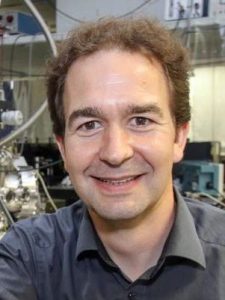
Michael Dürr
Institute of Applied Physics Justus Liebig University Giessen 35394 Giessen, Germany
Michael Dürr (*1971) studied Physics in Stuttgart and Munich. He received his PhD from the Technical University of Munich for an experimental work on the reaction dynamics on silicon surfaces which he conducted at the Max Planck Institute for Quantum Optics, Garching and at Columbia University, New York. After his PhD, he spent several years in industry (Sony Materials Laboratories in Stuttgart and Atsugi) before returning to academia. He is now a Professor in Physics at the Institute of Applied Physics of the Justus Liebig University Giessen. He leads a group of around 8 researchers being interested both in fundamental studies in the field of surface science and cluster-surface interactions as well as in the development and application of cluster-based mass spectrometry. In his laboratories, you can find a variety of surface analytical tools, among others two scanning tunneling microscopes, an XPS/UPS apparatus, as well as four mass spectrometers designed for cluster-induced desorption/ ionization mass spectrometry.
Michael started his SIMS-related activities in 2006 with his first experiments on cluster-induced desorption/ionization using neutral SO2 clusters as primary particles. In the following, he expanded his activities in this field; they now cover a wide range of methods and topics including molecular dynamics simulations of cluster-induced desorption phenomena, experimental studies on the fundamentals of desorption and ionization mechanisms, application of cluster-induced desorption/ionization to real- time monitoring of surface reactions, analysis of biomaterial, and the further development of cluster- based desorption/ionization MS techniques and apparatus. Most recently, his group got involved in the investigation of fundamental processes in MeV-SIMS as well as in the analysis of primary-ion- induced phenomena in soft materials. The latter ones are conducted in close collaboration with groups in Germany, UK, and Japan.
It was in 2011 at Riva del Garda when Michael attended his first conference of the biennial SIMS conference series. Since then, his group presented on every SIMS conference and they were also active participants at the regional SIMS meetings as well as on related conferences such as AVS and IVC. Michael has published more than 100 articles in peer-reviewed journals, contributed one book chapter, and holds 6 patents. His interests span from fundamentals to applications and from sub-keV to MeV primary particles which can be either ions or neutrals.
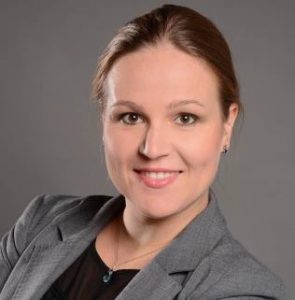
Manuela Killian is a research associate (Habilitandin) in materials science at the Friedrich-Alexander University of Erlangen (FAU), Germany.
She received her PhD from FAU in 2013 and held visiting research positions at the University of Cambridge, UK, and the University of Washington, Seattle, USA.
Manuela has more than 10 years of experience in ToF-SIMS and actively took part in the international SIMS conferences since she started research in this field, often with multiple contributions. Additionally, she worked extensively with XPS and other surface analytical techniques. Her expertise is located in nanoscale surface analysis and modification, ranging from investigation of organic monolayer adsorption on patterned or nanostructured metal oxide surfaces to controlled electrochemical production of the latter. A special focus of her research lies on implementation of organically modified complex nanostructured oxide materials for energy applications or implant technology. She authored and co-authored 44 peer reviewed articles and just recently established a junior research group that uses ToF-SIMS for characterization of complex nanostructured composite materials. She always tries to motivate students to get in touch with ToF-SIMS, which also constitutes a large part of the graduate level course in materials characterization that she teaches.
Manuela is a member of the admission board to the graduate course “Advanced Materials and Processes” and actively participated in the preparation and organization of several symposia and workshops at FAU.
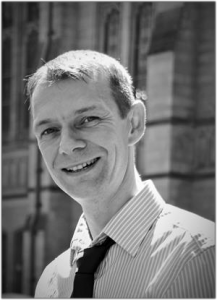
Nick Lockyer is a Professor of Physical Chemistry at the University of Manchester UK. Born in Oxford, Nick moved to Manchester in 1989 to study Chemistry, watch Manchester United and ultimately learn SIMS under the guidance of John Vickerman. In the intervening 30 years SIMS has got a lot more exciting (sadly, the football has not!).
Nick has helped lead instrumentation development, fundamental research and novel bio-imaging applications of ToF-SIMS and laser post-ionisation. Notable contributions from our lab include the introduction of Au-cluster, C60 and water-GCIB primary ion sources, the J105 buncher-SIMS instrument, some of the earliest femtosecond laser post-ionisation studies (with Nick Winograd), the first ToF-SIMS studies on cancer cells, the first 3D molecular SIMS image of a biological cell.
Nick has published >100 papers (H-index 37, ~4700 citations) and delivered 27 invited SIMS talks at major national/international meetings on 5 continents. He has attended 11 of the last 13 International SIMS Conferences since SIMS X in Munster (1995) as a PhD student. He Chaired the local-organising committee for SIMS XV in Manchester (2005) and Chaired the Post-Ionisation Techniques in Surface Analysis (PITSA 8) conference in 2002. His group in Manchester works in parallel on instrumental/fundamental advances and new applications of ToF-SIMS. We also apply our NanoSIMS to biological imaging. He has worked closed with Industry in both instrument development and applications research. Currently funded projects include novel GCIB projectiles for quantitative 3D SIMS imaging and applied SIMS research into cancer biology, biofuels and solid-state battery technology.
If elected to the International Committee, Nick will focus on promoting fundamental SIMS research alongside new applications and helping to develop and promote the next generation of SIMS experts.
